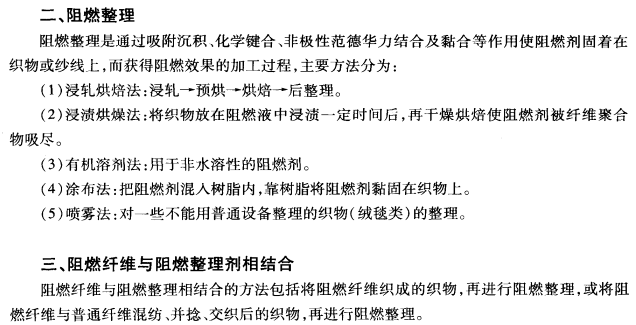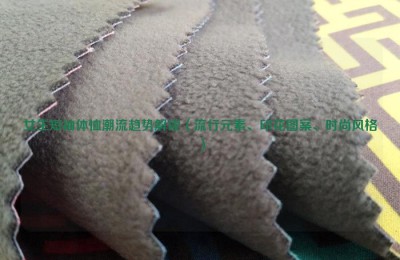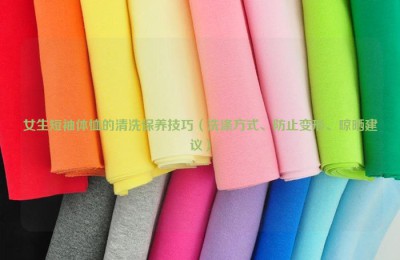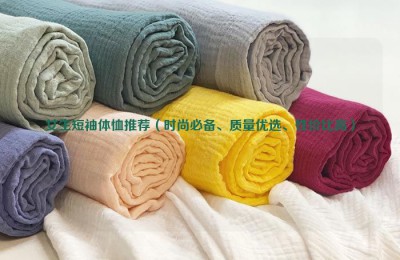According to the three elements of combustion and the characteristics of the combustion process, to achieve the purpose of flame retardancy, it is necessary to control solid phase decomposition to reduce the generation of combustible gases to inhibit gas phase combustion and weaken the thermal energy of combustible gases. This is the purpose of all flame retardant technologies. Specific flame retardant methods can be divided into three methods: manufacturing flame retardant fibers, flame retardant finishing of fabrics, and combining flame retardant fibers with flame retardant finishing. 1. Manufacturing flame-retardant fibers. The first is to improve the thermal stability of fiber-forming polymers; the second is to carry out flame-retardant modification of raw filaments. 1. Improve the thermal stability of fiber-forming polymers (1) Introduce aromatic rings or aromatic heterocyclic rings into the macromolecules of fiber-forming polymers to increase the rigidity of the chains, the density and cohesion of the macromolecules, thereby improving its thermal stability Sex, such as aramid 1313. (2) Through the cross-linking reaction between linear macromolecular chains in the fiber, it becomes a two-dimensional cross-linked structure, thereby preventing the carbon chain from breaking and becoming a flame-retardant fiber that does not shrink or melt, such as phenolic fiber. (3) The fiber stays in a high-temperature oxidation furnace for tens of minutes or hours, allowing its macromolecules to undergo oxidation, cyclization, deoxidation and carbonization reactions to form a conjugated system of ladder structures, thereby generating excellent high-temperature resistance. Flame retardant fibers, such as polyacrylonitrile oxide fibers. (4) The oxygen and nitrogen atoms in the fiber macromolecules are chelated and cross-linked with metal ions to form a three-dimensional network structure, which improves thermal stability, causing the fiber macromolecules to be carbonized when heated and has excellent flame retardancy, such as polyparaphenylene Diformyloxalylbiamidinehydrazone metal chelating fiber. 

AAA functional fabric networkSDFWERTEYRHF
Flame retardant method composite fabric information
According to the three elements of combustion and the characteristics of the combustion process, to achieve the purpose of flame retardancy, it is necessary to control solid phase decomposition to reduce the ge…
This article is from the Internet, does not represent Composite Fabric,bonded Fabric,Lamination Fabric position, reproduced please specify the source.https://www.yjtextile.com/archives/37517






